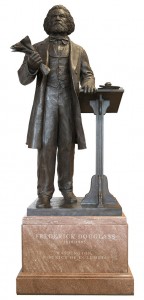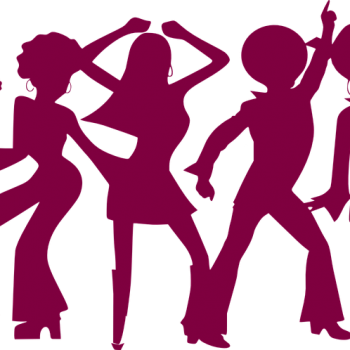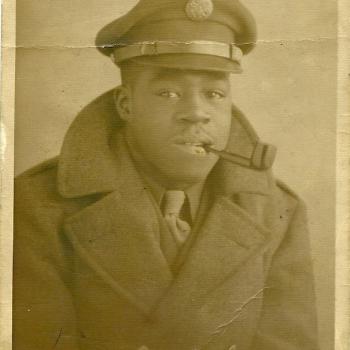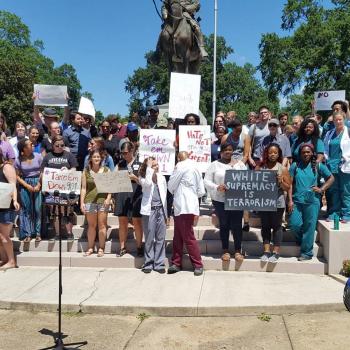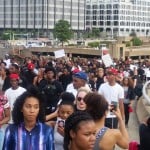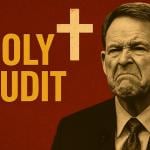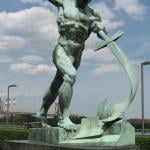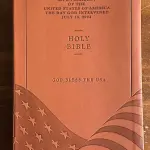First posted on Citizen Critics.
Once again, stores are stocked with miniature flags and coal for grilling. Americans are breaking out picnic blankets and American flag-themed apparel. At the same time, many Americans are buying poster-board and writing up calls to “Resist.” In a year marked by the largest protests in American history, a number of groups are planning demonstrations and marches on the Independence Day holiday. For a country where refusing to stand for the national anthem can be widely renounced as unpatriotic, using the Fourth to picket and shout into megaphones will surely draw some criticism.
Protest anyway. Independence Day has always been a day of resistance. Signing the Declaration of Independence was, itself, an act of profound protest, a call to reject an entire system of government. In the centuries since, the holiday has been used as a foil for disgruntled citizens to express their problems with society and the government. The causes have ranged from pacifism to abolitionism to women’s suffrage and beyond. Across these agendas, Americans have consistently found that the Fourth of July provides what the Greeks called kairos: an opportune moment to advance an argument.
A History of Dissent
The first Fourth of July protest happened just a year after the Declaration was signed. As citizens of Philadelphia gathered in 1777 to enjoy fireworks and banners, a group of pacifists — the Society of Friends — resisted the festivities and the glorification of violence. While much of the city lit their windows with candlelight to show support for the war effort, the Friends left their houses dark to condemn the ongoing Revolutionary War. An angry mob of pro-war Philadelphians shattered their windows. Then, as now, pushing back against a patriotic holiday carried a risk.
For the first few decades of the Republic, few people took that risk. In a young nation trying to build a sense of national identity, speakers tried not to dissent. Typically, they spoke in a way that was so ornate, so specific, and so image-driven that nothing was left to the audience’s imagination. For hours, they would vividly describe battles of the Revolutionary War, with sentences like, “CORNWALLIS droops his crest. This petrified colossus that would bestride our land, crumbles into dust.” It was eloquent stuff, but not meant to challenge how audiences thought.
As Fourth of July speeches became formulaic, speakers started trying to use their platform more subversively. In 1826, for instance, the idiosyncratic orator Robert Owen declared private property, “irrational systems of religion,” and marriage to be a “Trinity of the most monstrous evils.” As might be expected, listeners were outraged. Another example came from Boston, where each year the city carefully selected a well-known citizen to deliver an official Fourth of July speech. Bucking expectations, the young politician Charles Sumner challenged the way the Fourth of July celebration glamorized warfare and violence. He even had the gall to claim that George Washington should not be honored for any of his activity in war, but only as president. Blasphemy! City authorities were not pleased.
In time, Independence Day protests emerged as a powerful way for the disenfranchised to advance their arguments. Among abolitionists and former slaves, for example, critical gatherings were held on the fifth of July to draw a stark distinction from the celebrations on the Fourth. Across the 19th and 20th centuries, the holiday became a time for civil rights activists, antiwar demonstrators, and suffragists to pursue expanded political rights. As James R. Heintze chronicles in his Fourth of July Encyclopedia, these protestors form an important part of the tapestry of the holiday’s history.
An Opportune Time to Resist
Why is the Fourth of July such an appealing time to protest? In large part, it stems from the document the holiday commemorates. Written by a slaveholder to herald the “self-evident” nature of human equality, the Declaration of Independence has always captured the obvious contradictions between American ideals and an imperfect reality. As Abraham Lincoln put it, the Declaration was written to be “constantly labored for, and even though never perfectly attained… constantly spreading and deepening its influence.” Every time the Fourth of July comes around, it provides a chance to highlight that distance between the Declaration’s vision and its execution.
But there’s another, perhaps more obvious, reason why the Declaration provides such an effective basis for protest. People typically remember the first few lines of the Declaration of Independence, but most of the document is not an eloquent enumeration of natural rights. It’s a list of complaints. King George III had obstructed justice, denied the rule of law, granted too much power to the military, cut off trade, imposed taxes, quartered troops — the list went on. What better template for protest than a list of political grievances?
Thanks to its format, the Declaration offers an excellent model for those aiming to express their discontent. Take, for instance, the Declaration of Sentiments written by women’s suffragists at the Seneca Falls Convention in 1848. Rewriting Thomas Jefferson’s text to declare that “all men and women are created equal,” the authors adapted the list of grievances against King George to show how men oppressed women. Similarly, on the Fourth of July in 1915, suffragist Carrie Chapman Catt invoked the Declaration and followed a similar structure for her argument. Repeating the phrase “we protest” to start several sentences, she challenged women’s unequal treatment by government.
Protesting on the Fourth also creates an opportunity to highlight contrasts between those celebrating and those who, due to injustices, cannot. This is the rhetorical power of juxtaposition: setting two images side-by-side and letting them speak for themselves. Frederick Douglass was well aware of this technique when he delivered his famous Fourth of July speech. From the outset, he made it clear that he was weary of arguing the immorality of slavery. Instead, he used juxtaposition. To the slave, he said, “your celebration is a sham; your boasted liberty, an unholy license; your national greatness, swelling vanity.” Set beside horrific scenes of slave auctions, it was utterly perverse to hear men speaking about “liberty and equality.” Where argument would not work, Douglass made his audience feel dissonance.
And so, this Fourth of July, create that dissonance. While others down hotdogs and watch fireworks, take to the streets to challenge police brutality, threats to health care, underfunded veterans’ benefits, or efforts to suppress voting rights. List your grievances. Declare self-evident truths. Whatever your cause, this is the day to pronounce it loudly.
Michael J. Steudeman is a Visiting Assistant Professor of Rhetoric at the University of Memphis.
Donate to the Work of R3
Like the work we do at Rhetoric Race and Religion? Please consider helping us continue to do this work. All donations are tax-deductible through Gifts of Life Ministries/G’Life Outreach, a 501(c)(3) tax exempt organization, and our fiscal sponsor. Any donation helps. Just click here to support our work.

